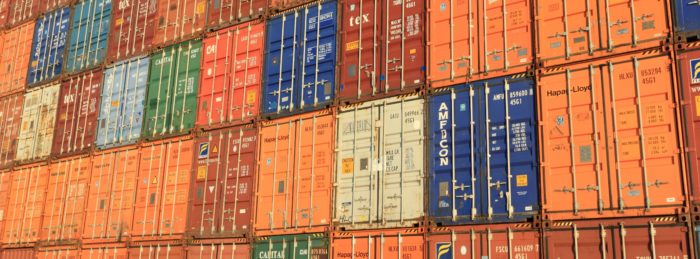Originally published in American City Business Journals
By Ashik Karim
Look around you. Notice the items on your desk, the phone in your hand, the food on your table.
Chances are, at some point, nearly every one of those items — as well as the components and raw materials comprising them — was on a truck.
It’s estimated that 80 percent of all cargo in America is transported by the trucking industry, dwarfing every other transportation option combined. It generates $730 billion in annual revenue, employs more than 7 million people, and is full of customers ill-served by the people trying to make life better for them.
I know this because I’ve seen it with my own eyes.
When I first began to think of working in logistics, an industry I’d never focused on before, I started at the bottom. I took site tours of offices where paper stacks and fax machines covered every inch of available desk space. I saw countless important business interactions end with the signing of a check. And I noticed an endless number of other ways in which this immensely important industry was running on outdated technology.
The problem is the solutions aren’t that much better.
The Wall Street Journal recently ran an article talking about how artificial intelligence is making life on the road easier for truckers. And they’re not the only ones pointing to technology as providing a major boost to the industry.
The $3.3 billion invested by venture capital over the past five years in an attempt to accelerate this transition to digital technology is great news for companies with a new product to sell. But the ultimate test is what it does or doesn’t do for the ultimate customer, the men and women on the road.
In truth, with the current options on the market, technology is actually making things harder for truckers and the ancillary staff that support them, not easier. A quick example first, for those not familiar with the landscape.
In 2012, Congress required that all truckers use electronic logging devices, or ELDs. The venture capital money that’s flowed in ever since has been an attempt, in part, to piggyback on this new mandate. And therein lies the problem.
A trucker today is required to spend money on their ELD every month, whether or not they’re actually driving. That’d be an issue even when times were good. Currently, they’re not.
Since the start of the trade war with China, some companies are having trouble finding enough freight to fill their drivers’ schedules, resulting in weeks where truckers work only three or four days.
With less demand, trucking companies are seeing revenue go down. Spot market rates, which measure the overall cost per mile to ship goods on trucks, peaked around this time last year.
As of last month, they’ve now dropped more than 36 percent.
The cost of ELDs isn’t just an issue because it affects a trucker’s bottom line no matter if they’re working or not. It’s also an issue because this rush to invest has created a load of competition but no clear winner. As a result, truckers must spend a not-insignificant amount of time researching and adopting new ELDs, oftentimes because the providers they’d previously relied on have gone out of business.
That doesn’t mean that problems don’t exist in the massive world of shipping that could be solved by technology. They do — as the head of logistics at a prominent food chain recently told me, it’s easier for him to look on his phone and find his family than it is to find his trucks.
Technology can help solve that problem, but only when it’s implemented in a way that’s actually going to push the needle in the right direction. Technology needs to be easy to use across every touchpoint in the industry, affordable to implement, and provide meaningful improvements in key metric areas.
There’s no easy answer for an enormous industry that’s failing its biggest customers in part because the market opportunity is so big it attracts a ton of new entrants. In the abstract, that’s a good thing.
The problem arises when those new entrants think only of the growth potential, and not solely about the customer they’re trying to serve. Having seen the problems up close, I’d encourage anybody else to climb into a cab or sidestep into an overstuffed office, just to get a sense of what these particular customers are working against.
Ashik Karim has more than two decades of global technology leadership experience in the telecommunications and high-tech sectors, driving change on how enterprises use business technology. Ashik Karim is the CEO of LiteLink Technologies.

